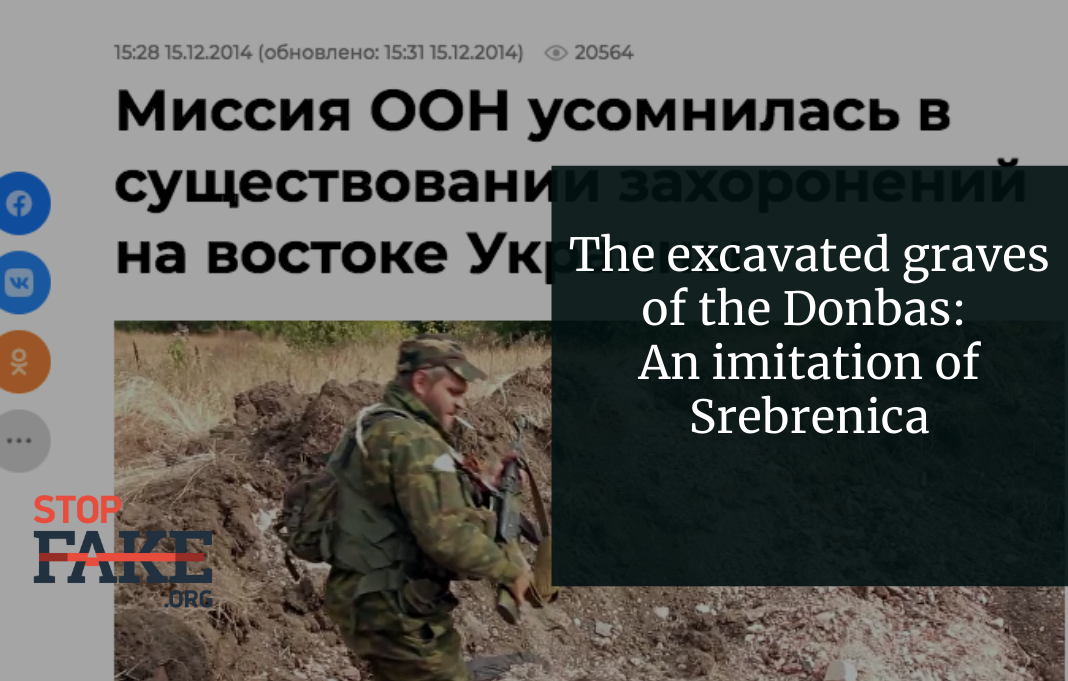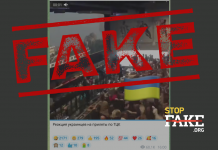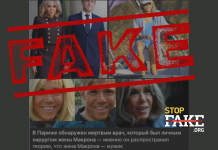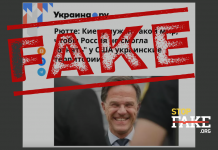
Nathalie Ishchenko
In various occupied districts of the Donetsk and Luhansk regions, so-called search teams excavate graves, declare them to be “the burials of peaceful residents” allegedly killed by the Ukrainian side in violation of the laws and customs of war, and then organize a solemn reburial.
Formally, this activity would seem to be of a humanitarian nature, because, indeed, civilians do die during war and their burials are not always properly arranged. The problem, however, is that Russia has turned even the subject of human remains into a hybrid weapon.
Under the Guise of a Humanitarian Mission
In recent months, the information and propaganda resources of the so-called Donetsk People’s Republic (DNR) and the Luhansk People’s Republic (LNR) and of the Russian Federation have periodically reported on the discovery of graves and the solemn reinterment of local residents killed in 2014-15 and the search for new “mass graves.” Serhiy Harmash, a member of the Tripartite Contact Group from Ukraine, recently wrote on Facebook: “Moreover, local propagandists emphasize that the remains being dug up from the ground are those of the ‘victims of Ukrainian aggression’ or of the ‘victims of the Armed Forces of Ukraine.’ These phrases have become propaganda staples, and have already begun to emerge in European media.”
According to Harmash, six-seven years after the tragic events, when intense fighting was taking place in the Donbas, “in the occupied territories efforts were begun with the aim of uncovering mass graves and identifying the human remains therein, that is, the search for missing persons.” From Russian and separatist sources it is now known that on the territory of the DNR and the LNR over the past three months “field teams” have been tasked with the “search for and discovery of burial sites.”
These activities intensified this summer, when on July 22, 2021, Russia filed a case against Ukraine in the European Court of Human Rights. Among the claims — “war crimes committed by the Ukrainian army and nationalist battalions in the Donbas.”
In August 2021, in Donetsk and Luhansk, authorities created “Interdepartmental Commissions on the Search for Missing Persons, the Search for Places of Burial of the Bodies (Remains) of the Dead (Deceased) in Areas of Armed Conflict in the Donbas.” The commissions signed an “Agreement on Interactivity, Cooperation and Exchange of information.”
In early November, Luhansk hosted an International Round Table titled “The Unhealed Wound of the Donbas,” which was dedicated to “summarizing the interim results of the search for the burial sites of victims of Ukrainian aggression,” “their identification and the perpetuation of their memory.” Discussions centered on approximately 10 burial sites and the discovered remains of about 300 persons. It’s not known with any degree of certainty who these people were, nor how and when they died; the DNR and LNR authorities, however, have already issued their verdict. According to reports, the moderator, Serhiy Kolesnikov, in opening the meeting, claimed that “for the eighth year in a row, Ukrainian gunmen have been killing Donbas residents only because they are Russians.” Kolesnikov used the word “russkiye,” which refers to ethnicity. His remarks provide the key to understanding the special operation Russia is conducting under the guise of “searching for dead civilians” in the areas of the Donbas it occupies. This is not a humanitarian mission; the Kremlin has simply decided to gather arguments in support of its fabrication that the Ukrainian military committed “ethnic cleansing,” that is, “genocide,” in the Donbas. The killing of persons because of their ethnic affiliation falls under this definition and is a violation of the laws and customs of war, while the accidental death of civilians during hostilities does not.
Following the Yugoslavia Example
The regurgitation of the theme of “the genocide of Donbas residents” is not something new for Russian propaganda. Seven years ago, in September and October of 2014, Russian media was filled with “sensational information” about the “crimes” of Ukrainian forces.
In particular, Russian television’s First Channel, in its September 23 newscast, citing DNR investigators, reported on the “mass burial of civilians” found in an area the Ukrainian units had left the day before. The report referred to a grave containing the remains of four unidentified persons, who had died under unknown circumstances. Nevertheless, the channel found Ukrainian “security forces” “guilty” in their death, obviously without any trial.
Other propaganda media, first of all the television channels “Russia,” NTV, TV Center, and RT (English) picked up and disseminated the story.
The reaction to these reports, especially from the world community, was not, however, what the ideologues of this campaign had expected, and Moscow raised the stakes.
On September 25, 2014, Rossiyskaya Gazeta, the official publication of the government of the Russian Federation, published an article entitled “Genocide. Thousands of Residents of the Donbas were Brutally Murdered by the Punishers [karateli].” The text, which is simply brimming with outrageous fakes, ends with two quotes from Russian officials. The Deputy Secretary of the Civic Chamber of the Russian Federation, Sergei Ordzhonikidze, states that what is absolutely necessary in the Donbas is international control, by the OSCE or the UN. And the Chairman of the Presidential Council for Civic Society and Human Rights, Mikhail Fedotov, did not rule out the possibility of discovering new burial sites, recalling that mass killings were the “reality of modern warfare” and that similar crimes took place on the territory of the former Yugoslavia.
That is to say that the Kremlin, back in 2014, decided to transfer the realities of the Balkan wars to Ukrainian soil, and to act as, in their opinion, the international community had acted in the 1990s against the Serbs.
On September 30, 2014, Rossiyskaya Gazeta wrote about how Latvian human rights activist Einars Graudins and an OSCE group “visited the locations of mass graves in the Donetsk Region, where the bodies of more than 400 civilians and executed members of people’s militias were found.”
A close look at the Latvian’s statement suggests that his story might be modeled on the report of the OSCE observation mission in Kosovo in January 1999, when the remains of 45 residents of the village of Racak were identified as Kosovo Albanians who died at the hands of Serbian security forces. This crime became a turning point in the conflict: it was after the details of the tragedy were made public by an OSCE representative, the UN, citing humanitarian reasons, decided to launch an air operation against Yugoslavia.
Russia, however, was not able to recreate this course of events in the Donbas, getting approval from the world community for a “peacekeeping operation against Ukraine.” Its stories about the “crimes of Ukrainian punishers” against the “peaceful people of the Donbas” turned out to be banal fakes.
Firstly, it was revealed that Einars Graudins had nothing to do with the OSCE and that, in fact, he is a leader of an openly pro-Russian political party in Latvia.
His claim about “400 killed civilians who were found in mass graves in Donbass” was refuted even by the separatists, who said that they were “misunderstood.”
Two and a half months later, in December 2014, the monitoring mission of the Office of the UN High Commissioner for Human Rights, which monitors the situation in Ukraine, stated that it had no data on the location of any mass graves in Ukraine’s Donbas. This was reported even by Russian news agencies.
Meanwhile, the head of a unit of the Office of the UN High Commissioner in charge of the Americas, Europe and Central Asia stated: “We have no data on the location of mass graves, which would allow us to report on this in accordance with the rules, as well as to ensure the preservation of evidence for access by experts. We inquired about where such burial sites might be located, but got no reply.”
The case of the “genocide in the Donbas,” however, did not disappear and soon found itself again in play.
An Imitation of Evidence
In 2017 and again in 2019, Vladimir Putin, explaining to the West why Ukraine must not be given back control of its border, attempted to scare the world with the spectre of a “new Srebrenica.” According to his logic, if the border is closed, Kyiv will immediately start the “ethnic cleansing” and Moscow will not be able to intervene to protect the “civilians of Donbas,” as NATO did in the 1990s to protect Bosniaks from Serb aggression.
Of course, it is ironic that Putin mentioned Srebrenica in a negative context; Russia does not recognize the killing of Muslims in Srebrenica as genocide and, on every occasion, opposes this designation. However, in order to advance its goals in Russia’s war against Ukraine, the Kremlin, apparently, has decided to ignore how its words might be perceived in the Balkans.
In October 2017, at a meeting of the Valdai Discussion Club in Sochi, Putin, commenting on events in the Donbas, said: “Before political issues can be resolved, before the question of granting these territories special status is answered – unless a law on amnesty is passed and all of this is done, the closure of the border between Russia and the unrecognized ‘republics’ will lead to a situation on a par with Srebrenica. There will simply be a massacre.”
In December 2019, at a meeting of the Russian Human Rights Council, which took place almost immediately after the Paris summit in the Normandy format with the participation of the presidents of Ukraine, Russia and France and the German chancellor, Putin stated: “The Ukrainian side is constantly raising the question: give us the chance to secure our border with the use of troops. Well, I can just imagine what will come next. Srebrenica – that’s what. We’ve seen how President Zelensky conducts talks with the nationalists. It’s unclear who is stronger there. And what will happen there? And who will lead them, these nationalists, when they enter these territories before the people there receive guarantees?”
Volodymyr Zelensky himself recalled that Putin had made the reference to Srebrenica at the Paris summit. “He said this [about Srebrenica] twice; he said it at our meetings,” the Ukrainian president said in 2019.
In July 1995, the town of Srebrenica, in Bosnia and Herzegovina, was captured by the Bosnian Serb army, which proceeded to murder over 8000 unarmed Bosnian Muslims, from teenage boys to elderly men. The Srebrenica killings were the largest massacre in Europe since World War II and led directly to a decision to maximize the use of NATO forces to end the war in Bosnia. The International Criminal Tribunal for the Former Yugoslavia later ruled that the Srebrenica massacre constituted genocide.
The search for the victims at Srebrenica has taken years, and is still unfinished, as the guilty party, the Bosnian Serbs from the army of the Republika Srpska, buried the victims in various parts of Bosnia in order to cover up their crime. Today, Russia, by organizing “searches for killed civilians” in the Donbas, is apparently “copying” this process, in order to present its imitation evidence in an international court – after conducting a propaganda campaign in the world media.
Serhiy Harmash, a Ukrainian member of the Tripartite Contact Group, wrote: “Why did the campaign to search for ‘victims of the Armed Forces of Ukraine’ and ‘victims of Ukrainian aggression’ begin in the DNR and the LNR precisely at this time? The answer is simple: Ukraine has intensified its activities in international courts to bring Russia to justice for its aggression in the Donbas and Crimea. And as soon as the Kremlin smelled that the fat is in the fire, or, more specifically, got a whiff of the Hague Tribunal, it began to prepare a response by forming public opinion in the West and gathering ‘evidence’ for an acquittal.”
Russia’s hybrid strategy, built on fakes and manipulations, has already shown its ineffectiveness. As we can see, however, that’s not going to convince the men in the Kremlin to give it up.





